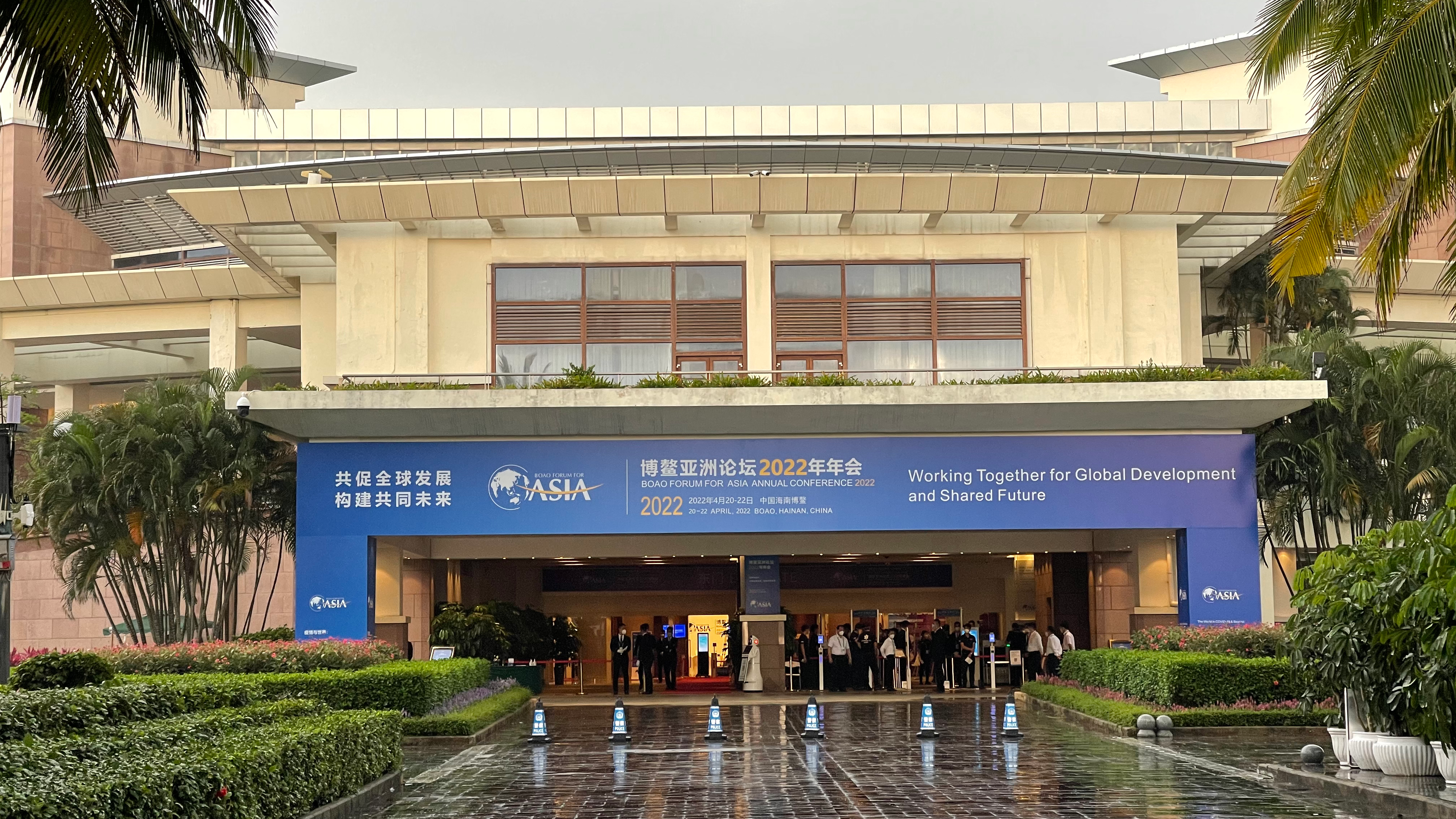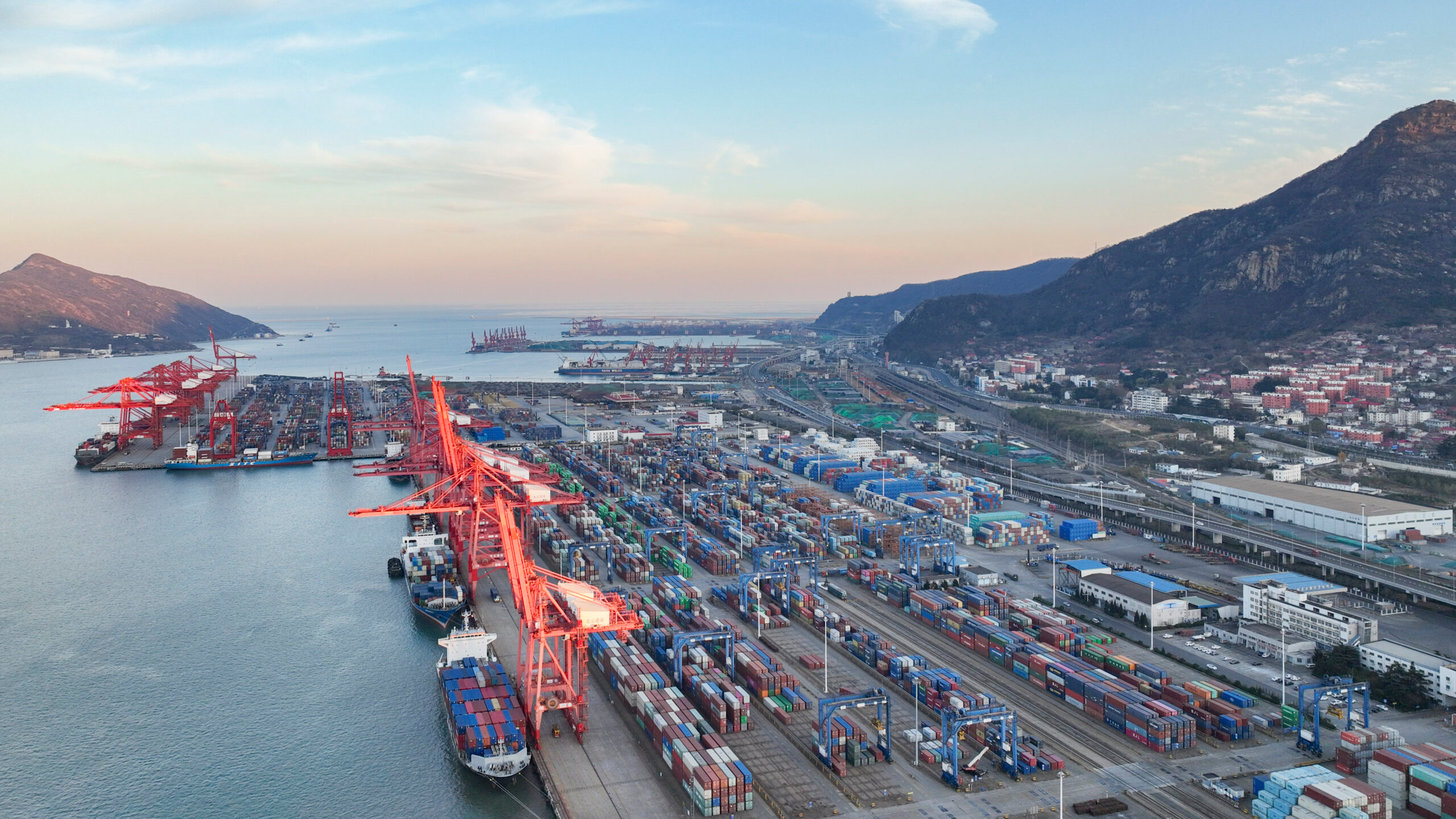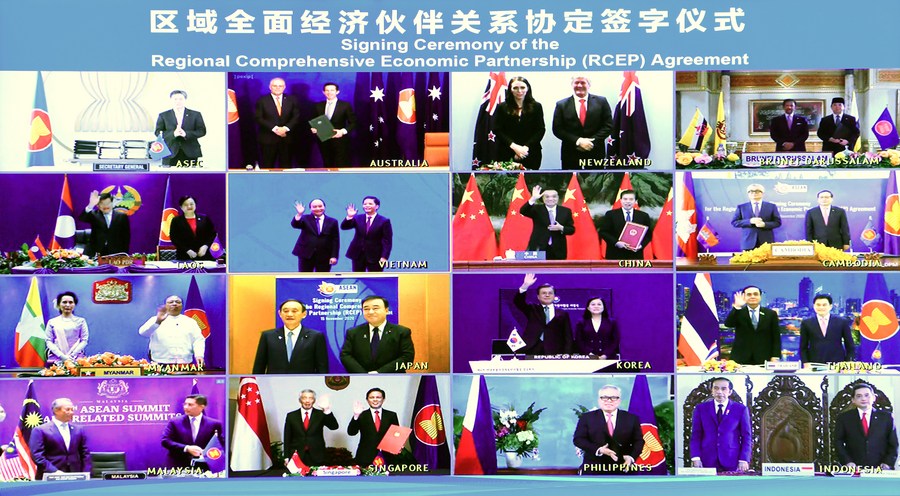
The site of the annual Boao Forum for Asia (BFA) International Conference Center in Bo'ao, south China's Hainan Province, April 20, 2022. /CGTN
The site of the annual Boao Forum for Asia (BFA) International Conference Center in Bo'ao, south China's Hainan Province, April 20, 2022. /CGTN
Asian economies should work together to strengthen international exchanges and cooperation to address a series of crises facing the world this year, the recently released Asian Economic Outlook and Integration Progress Annual Report 2022 said.
Released by the Boao Forum for Asia 2022 on Wednesday, the report summed up six essential factors that will impact Asia's economic performance in 2022: the evolution of COVID-19, geopolitical tensions after the Russia-Ukraine conflict, monetary policy adjustment in the U.S. and Europe, debt problems in some economies, the global supply of primary products and political regime changes in some Asian countries.
The world has been living with COVID-19 for more than two years. In January, the World Bank forecast a striking deceleration in global economic growth in 2022 based on the resurgence of outbreaks due to new virus variants, tighter fiscal policies and supply chain disruptions. Dropping from last year's 5.5 percent – the fastest post-recession recovery in 80 years, the global growth was initially projected to be 4.1 percent in 2022. But the rate was cut further to 3.2 percent following the Russia-Ukraine conflict.
Russia's "special military operation" in Ukraine, launched on February 24 and still underway, added new uncertainties to the already turbulent path of global recovery. Large-scale military clashes and Western sanctions put global trade at risk. Meanwhile, commodity prices, such as energy and food, soar as inflationary pressure intensifies.
However, despite the obstacles, Asia is showing continued signs of recovery. Solid export growth led Asia's strong economic rebound in 2021 and will continue to be a main contributor this year. The Omicron outbreaks had milder health impacts than previous waves, and the high vaccination rate across the region allowed Asian economies to remain open, a recent report from the Asian Development Bank (ADB) shows. Unlike most of the world, inflation, though increased, remained relatively moderate for most of the continent, aside from the Caucasus and Central Asia. The ADB estimates that Asia's gross domestic product (GDP) will expand by 5.2 percent in 2022 and 5.3 percent in 2023.

An aerial photo of the container terminal in Lianyungang, east China's Jiangsu Province, December 1, 2021. /Xinhua
An aerial photo of the container terminal in Lianyungang, east China's Jiangsu Province, December 1, 2021. /Xinhua
Einar Tangen, a political and economic affairs commentator, thinks that the future of the world lies in Asia, evidenced by the vast amount of foreign direct investment (FDI) pouring into it. In the context of the Ukraine crisis, Asia has become a more attractive trade hub compared to Europe and the United States.
"It's a very difficult time for businessmen to invest because you have so much uncertainty out there, and business people like certainty. So, right now, if you start looking at the world, Asia is definitely the most certain place that you can look," Tangen said on CGTN's "the Hub with Wang Guan" on Thursday.
Comprising 48 countries, Asia is now the largest continental economy in the world by nominal GDP and purchasing power parity (PPP). Data from the International Monetary Fund (IMF) shows that Asia's nominal GDP in 2022 will be near $42 trillion, accounting for 40 percent of global GDP. In PPP terms, the share is even higher at 48 percent with 77 trillion international dollars, more than doubled that of second-ranked Europe's 34 trillion.
Chinese President Xi Jinping also emphasized Asia's increasing role on the global stage by calling for making Asia an "anchor" for world peace in his video address to the Boao forum on Thursday. Mutually beneficial cooperation, such as the Regional Comprehensive Economic Partnership Agreement (RCEP), also help foster a more open market in both Asia and the world.
"When Asia fares well, the whole world benefits," Xi said.
RCEP, the world's largest trade bloc, encompasses all 10 members of the Association of Southeastern Asian Nations (ASEAN), together with China, Japan, South Korea, Australia and New Zealand. The 15 members account for around 30 percent of both the world's population and the global GDP. The deal makes history in that it is the first free trade agreement between China, Japan and South Korea, three of the four largest economies in Asia. Together, the East Asian trio's combined GDP reaches over $20 trillion, surpassing the European Union.
Aside from eliminating tariffs on 90 percent of the goods traded among member countries, another significant change that RCEP brings is the creation of the accumulative rule of origin. Merchandise manufactured using ingredients or elements from fellow RCEP members will be recognized as locally made and would therefore benefit from tariff concessions. As a result, products that would not have been regarded as originating goods can easily qualify for zero tariffs.

Chinese Premier Li Keqiang and leaders of other countries attend the signing ceremony of the Regional Comprehensive Economic Partnership (RCEP) agreement, November 15, 2020. /Xinhua
Chinese Premier Li Keqiang and leaders of other countries attend the signing ceremony of the Regional Comprehensive Economic Partnership (RCEP) agreement, November 15, 2020. /Xinhua
Marcos Troyjo, president of the New Development Bank, said Asia has become a "geo-economic meridian of the globe" over the past four decades. As a Latin American, Troyjo thinks Asia's growth will bring more opportunities to itself and the regions beyond. The growing economic ties between Asia and Latin America, and similarly between Asia and Africa, are powered by win-win cooperation.
"As Asia rises, some of the traditional comparative advantages of Latin America stand out in the production of food and the goods that are going to cater to the rising population and the rising economic status of Asia," Troyjo told CGTN's "The Hub" on Thursday.

